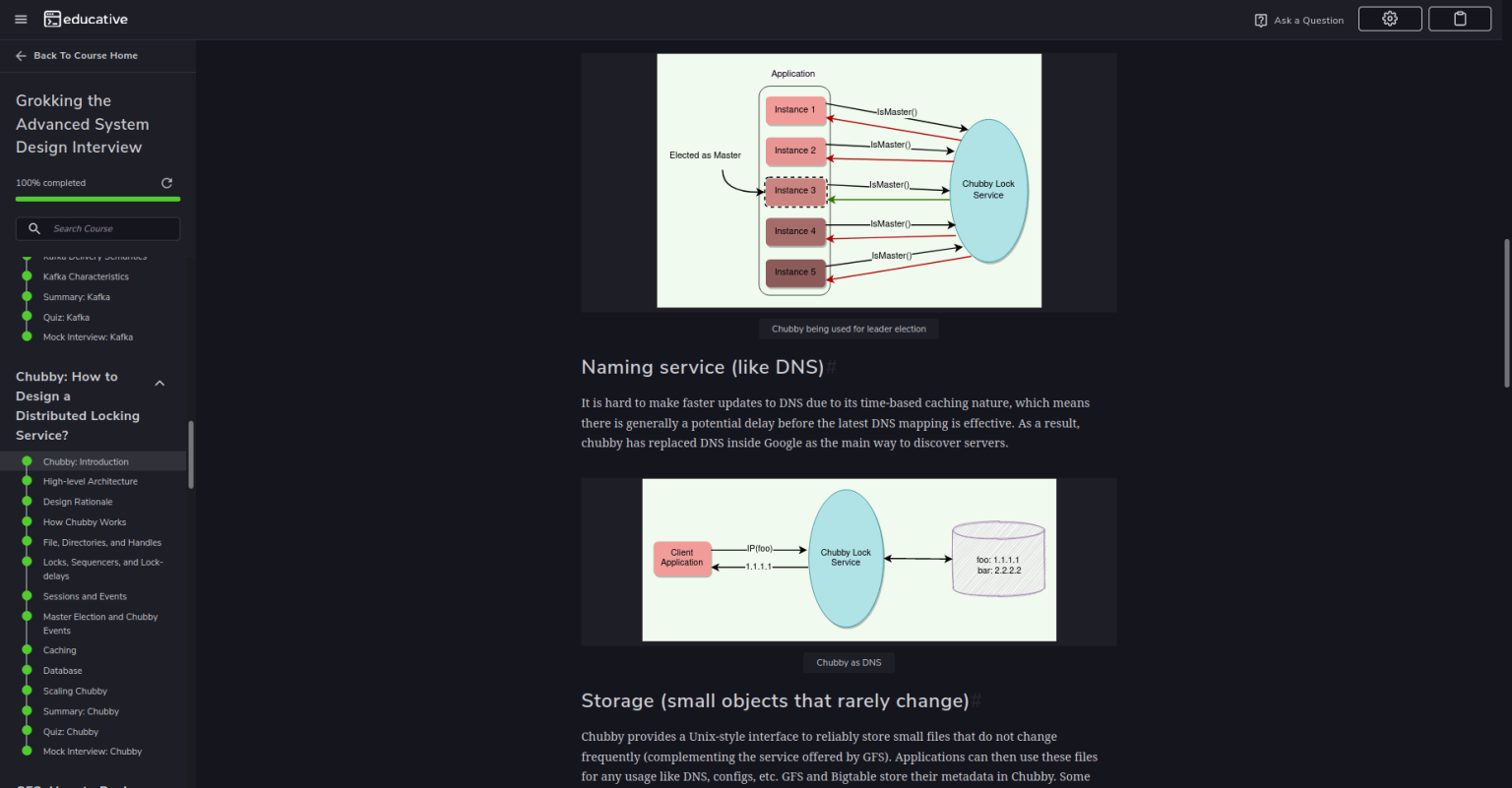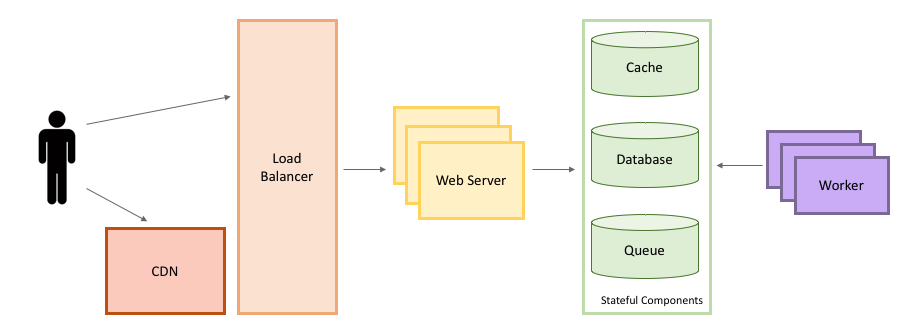Table Of Content
- What kind of Experience do you want to share?
- What is the difference between System Design and solution architecting?
- Real-World Success Stories and Testimonials
- Possible questions for every SDI
- Tips for Maximizing Success with Grokking the System Design Interview
- Grokking Modern System Design Interview Guide

Once you have adequately prepared, it's time to focus on the actual system design interview. This section will provide an overview of what to expect in the interview and outline effective communication strategies. Data partitioning involves dividing large datasets into smaller, manageable partitions.
What kind of Experience do you want to share?
Other courses may teach the same core concepts of system design that we do, but we’re confident that once you try an Educative course, the quality of our course content will speak for itself. Grokking Modern System Design for Engineers & Managers distills years of system design experience, industry knowledge, and best practices into a single course. With Educative, you can always expect to see the latest and most relevant content. To master system design, you’ll need a combination of foundational knowledge, industry insights, and hands-on experience. The design of the early version of Google Search may seem simplistic today, but it was quite sophisticated for its time. It also kept costs down, which was necessary for a startup like Google to stay afloat.
What is the difference between System Design and solution architecting?
You will be expected to explain your thought process, justify your design decisions, and engage in a back-and-forth dialogue. The interviewer may ask probing questions to assess your understanding of the problem and your ability to come up with innovative and scalable solutions. When it comes to the system design interview, thorough preparation is key. This interview assesses your ability to design scalable and efficient systems, taking into account various factors such as performance, availability, and reliability.
Real-World Success Stories and Testimonials
The course defines a step by step guide to solve a design question in technical interviews. This course presents the architectural review of famous distributed systems. The main goal is to extract out important design details that are relevant to system design interviews. The course also presents a list of system design patterns that constitute the common design problems and their solutions that different distributed systems have developed over time. In this course, we have made the complex world of system design easy to understand.
How to answer in interviews
Also, since we only have minutes to design a (supposedly) large system, we should clarify what parts of the system we will be focusing on. As designers, we need to provide fault tolerance at the design level because almost all modern systems use off-the-shelf components, and there are millions of such components. So, something will always be breaking down, and we need to hide this undesirable reality from our customers.

Possible questions for every SDI
This interview process can be quite challenging, even for experienced software engineers. Having gone through several system design interviews myself, I found that the best way to prepare is through a dedicated course that focuses on this topic. That's when I came across Grokking the System Design Interview, a course that claims to offer comprehensive guidance on this subject. Examining case studies of typical system design interview questions can provide valuable insights.

Going back to our very first system design course in 2016, Educative has always had deep roots in system design. As a result, hundreds of thousands of engineers have already leveled up their careers with the help of Educative’s system design resources. Now we’re thrilled to share this brand new course to help developers and managers navigate the evolving landscape of system design and design the future of scalable web applications.
Tips for Maximizing Success with Grokking the System Design Interview
Database design is an important aspect of system design, as it involves designing efficient and scalable data storage solutions. Understanding concepts such as normalization, indexing, and query optimization will help you design robust and performant databases. The issue you’re presumably asking is whether the course is worth the money and time you’re going to spend on it.
Consistency & Consensus for System Design Interview (4): implementing causality - Medium
Consistency & Consensus for System Design Interview ( : implementing causality.
Posted: Sun, 03 Sep 2023 07:00:00 GMT [source]
Whether you're a newbie or a seasoned pro, this course will equip you with the skills to create efficient and scalable systems. Think of it as a roadmap, guiding you through the process of building and maintaining systems that can handle big challenges. We'll teach you how to break down complex problems into smaller, manageable parts, just like taking a big puzzle and turning it into smaller, solvable pieces. While web developers or software engineers are concerned with meeting the needs of millions of users, data engineers are designing solutions to gain insights from all of the telemetry collected by the system.
Explore examples like designing a social media feed system, a ride-sharing service, or a distributed messaging platform. Understand the challenges faced in each scenario and learn from the design choices made to overcome them. System design interviews typically involve solving a real-world problem by designing a system architecture. You may be asked to evaluate requirements, propose a high-level design, discuss trade-offs, and dive into specific components of the system. Expect to engage in an interactive discussion with the interviewer, where you explain your thought process and justify your design decisions. In addition, system design interviews also assess a candidate's communication skills.
Here are a few reasons why we’re so excited about this course, and why we’re so confident it will set you up for success. Try to discuss as many bottlenecks as possible and different approaches to mitigate them. The arrows between these boxes represent who talks to whom and how the boxes or components fit together collectively. The Object-Oriented Design (OOD) approach is a popular methodology that focuses on modeling the system as a collection of objects that interact with each other. It emphasizes encapsulation, inheritance, and polymorphism to create modular and reusable components.
It is a given that a good performance in system design interviews will get you a senior position and result in higher salaries. It's the key to creating efficient, reliable, and scalable solutions, whether you're building software, designing websites, or crafting complex systems. System design empowers you to make the most of resources, ensuring technology runs efficiently and smoothly. It's also a skill highly valued by employers, as it's essential for solving real-world problems and staying competitive in the ever-evolving tech industry. Whether you're a beginner or an experienced professional, grasping system design principles will open doors to better career opportunities and help you excel in a tech-driven world.
If you are unsure about any part of the question or need further clarification, don't hesitate to ask for it. Clarifying questions can help you align your understanding with the interviewer's expectations and avoid any misunderstandings. Once you have a clear understanding of the problem, start by defining the system's goals and constraints. This will help you establish the scope of your design and guide your decision-making process. Consider factors such as scalability, availability, reliability, performance, and cost when defining the goals and constraints of the system. Luckily, numerous resources are available to aid in your system design study.
Online platforms like LeetCode, System Design Primer, and Grokking the System Design Interview offer a wealth of practice questions, tutorials, and articles. These platforms provide hands-on practice and help you familiarize yourself with real-world system design scenarios. Now that we have covered the fundamentals, let's focus on preparing for the system design interview. This section will highlight essential topics to review and provide resources for effective system design study.
While each of these courses has its merits, Grokking the System Design Interview offers a more comprehensive and structured approach to learning system design. The interactive nature of the course, combined with its real-world case studies and examples, sets it apart from other resources. Furthermore, the course is specifically designed for software engineers preparing for system design interviews, ensuring that you receive the most relevant and practical guidance. As a software engineer, I have realized that one of the most crucial aspects of landing a job in a top software company is acing the system design interview.
Availability is crucial for users who rely on the service for transportation. By analyzing and answering these questions, you can gain a deeper understanding of the design process and familiarize yourself with the types of problems you may encounter. Having a solid understanding of concepts like replication, sharding, and consistency models will enable you to design systems that can handle high traffic and scale horizontally.


No comments:
Post a Comment